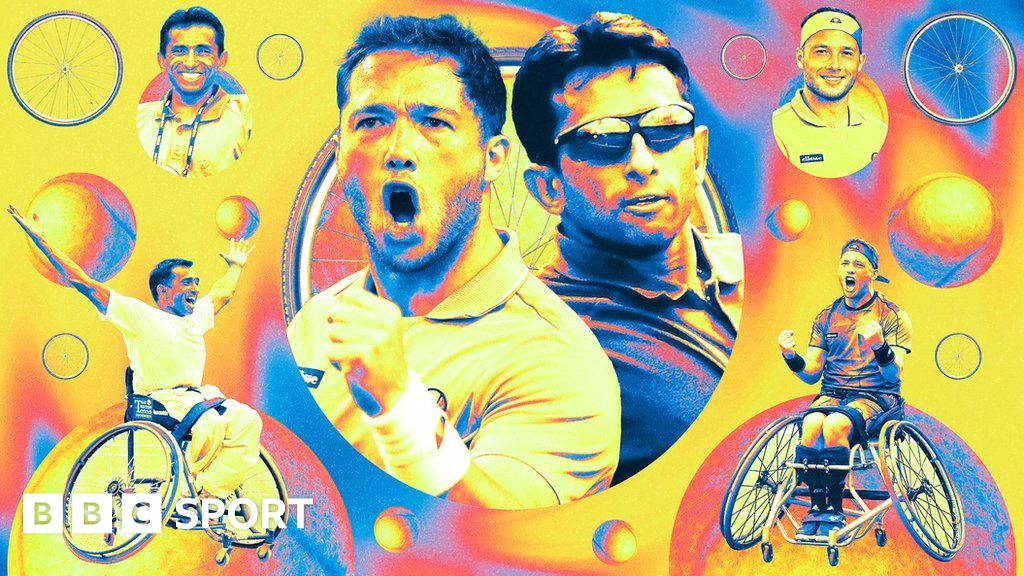In 2005, Mistry and Ammerlaan won the inaugural wheelchair competition at Wimbledon, for which they earned £1,300 each. Fast forward to 2023 and the wheelchair doubles champions at the All England Club, Alfie Hewett and Gordon Reid, picked up £13,000 each.
Mistry says he would not change a thing about his career, during which he travelled the world and made life-long friendships. Those times may not have been flush with cash, but they were rich in experience – including a locker-room chat with Agassi before a US Open final.
“When you entered a tournament in those days you’d pay an entry fee, say £200, and that would include accommodation, food, entry into the tournament,” Mistry, a four-time Paralympian who won 68 titles and who was a top-10 player in singles or doubles for over 12 years, remembers.
“I was playing the French Open once and sharing with a French guy. I didn’t know him, they just put us in a room. His snoring was so bad that I actually had to take my pillow and my duvet and sleep in the hallway.
“Today everyone’s got individual rooms, they’ve got their coaches with them, they’re flying first class. It’s a different world. I think in an average year, even towards the end of my career, I was probably earning £20,000 for the year and I would have done 20 tournaments.”
When it was announced in August 2001 that the following year’s Australian Open would feature a wheelchair competition, Tennis Australia president Geoff Pollard said: “This new initiative gives us a chance to continue to grow the sport by showcasing the world’s best.”
Staging the wheelchair game in the same time and space as a Grand Slam changed perceptions, integrating wheelchair tennis into the non-disabled game in a way that is, as Mistry puts it, “built in, not bolted on”.
He adds: “It’s not only it being at the Grand Slams which gives it a sort of credibility, but the exposure of being part of the event too.
“It adds a great deal towards the inclusive nature that wheelchair tennis brings.”
The exposure has helped the likes of Alcott, all-conquering Dutch legend Esther Vergeer, and Mistry’s compatriot and eight-time Grand Slam singles champion Hewett – who was on the shortlist for the 2023 BBC Sports Personality of the Year – become genuine stars.
These days it is common for a wheelchair event to run within an ATP or WTA event – the prestigious Queen’s Club tournament in London is among those to stage one – and this trend looks set to continue.
Vergeer, who runs a tournament in Rotterdam, told the ITF in 2020:, external “The regular standalone wheelchair tennis tournaments need to exist and they are very, very important for the development and the growth of the sport.
“But to raise the profile of wheelchair tennis and getting it seen by more and more public I think it is important that we are integrating more and more tournaments throughout the year.”
Combining with the non-disabled game has helped wheelchair tennis’ continued growth. By last year, the Wheelchair Tennis Tour, which began in 1992 with a handful of events, had expanded to a circuit of 169 tournaments in 40 countries.
The tour encompasses seven tiers, as well as a junior series. Its popularity is also booming.
Note:- (Not all news on the site expresses the point of view of the site, but we transmit this news automatically and translate it through programmatic technology on the site and not from a human editor. The content is auto-generated from a syndicated feed.))



